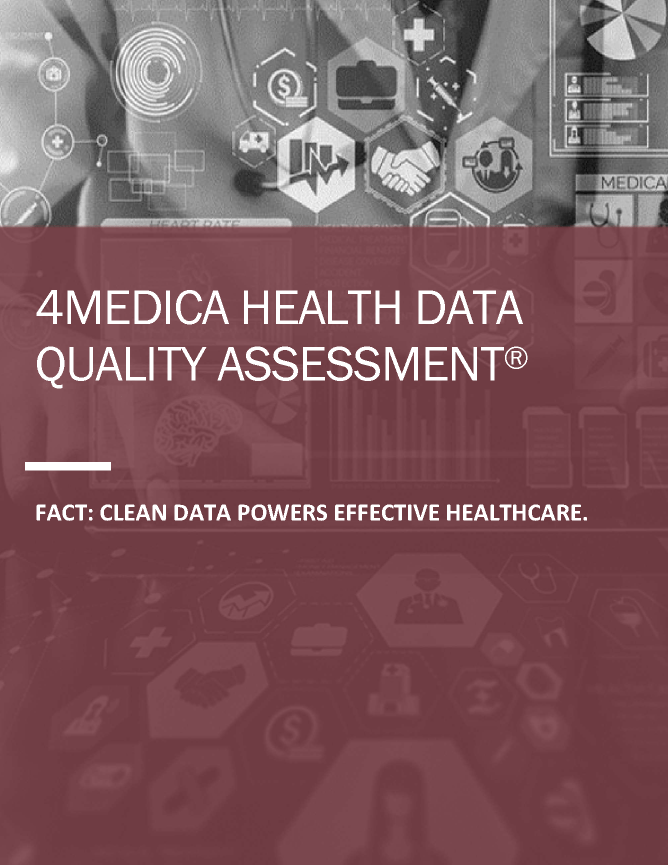In the age of digital transformation, the healthcare industry is undergoing a profound evolution driven by the integration of technology into every facet of patient care and administrative processes. A pivotal element of this transformation is healthcare interoperability. In this comprehensive exploration, we will delve into what healthcare interoperability is, the significance it holds in healthcare, and a detailed examination of the eight significant benefits it ushers into the healthcare sector. We will also discuss how it contributes to safeguarding patient data, aids researchers in their pursuit of the public good, enhances staff productivity, facilitates seamless data exchange with other systems, reduces the overall cost of care, mitigates physician burnout, elevates the quality of care and the patient experience, and ultimately fosters better population health.

What is Healthcare Interoperability?
Healthcare interoperability fundamentally pertains to the ability of various healthcare systems, such as Electronic Health Records (EHRs), pharmacy systems, insurance databases, and medical imaging software, to connect and seamlessly share data with each other. In the healthcare context, these systems are often developed by different companies with varying specifications, making interoperability a critical factor for the efficiency and effectiveness of healthcare operations.
In a practical sense, consider a scenario where a patient moves between different healthcare providers, such as primary care physicians, specialists, and hospitals. These providers may use different EHR systems, but healthcare interoperability ensures that crucial patient data, including medical history, test results, and treatment plans, can seamlessly transfer between these systems. This seamless exchange of information ensures that no matter where a patient receives care within the healthcare ecosystem, healthcare providers can access the necessary data to make informed decisions.
8 Benefits of Interoperability in Healthcare
Now, let’s explore the key benefits of interoperability in healthcare in greater detail:
1. Helps Safeguard Patient Data
Protecting Patient Privacy: Patient data privacy and the security of sensitive medical information are paramount in healthcare. Interoperability plays a pivotal role in this regard by minimizing the need for manual data entry and updates, automating data sharing between systems. This not only reduces the risk of human error but also limits the number of individuals who handle sensitive patient information. Strict access controls can be implemented to monitor data access, enhancing data security and reducing the likelihood of data breaches.
Data Encryption and Authentication: Interoperable systems often employ robust data encryption techniques to secure the transmission of patient data. Additionally, strong user authentication measures ensure that only authorized personnel can access patient records. This multi-layered security approach offers comprehensive protection for patient data, reducing the risk of unauthorized access.
2. Assists Researchers Working for the Public Good
Unlocking the Power of Patient Data: The data generated during routine patient care becomes a valuable resource for public health researchers. Interoperability bridges the gap between internal healthcare systems and networks of computers relied upon by researchers for tasks such as epidemiological studies and treatment efficacy evaluations.
Research Data Standardization: Interoperable systems often adhere to standardized data formats and coding systems. This standardization ensures that data shared with researchers is consistent and interpretable, facilitating meaningful analysis. For example, patient diagnoses and treatments are coded using standardized terminology, enabling researchers to compare data from different sources effectively.
Community Health Initiatives: Healthcare organizations can actively contribute to community health initiatives by sharing anonymized patient data with public health agencies. This collaborative approach can help identify and address health disparities, outbreaks, and emerging health trends within the community.
Fostering Community Engagement: Interoperability not only streamlines data utilization within healthcare organizations but also empowers them to share data more readily with researchers dedicated to addressing society’s myriad health challenges. By highlighting this commitment in marketing materials, healthcare organizations can bolster their reputation within the community, nurturing goodwill and trust.
3. Improves Staff Productivity
Streamlined Data Entry: The adoption of interoperable systems is synonymous with a noticeable uptick in staff productivity. A significant contributor to this surge is the drastic reduction in redundant data entry. In healthcare environments characterized by interoperability, healthcare professionals no longer grapple with the tedious task of inputting the same information repeatedly across various systems.
Transition to Digital Records: Working predominantly with digital documents or, at the very least, converting paper-based records to digital formats streamlines processes like record retrieval and updates. The time savings gained by healthcare providers can now be redirected towards patient care, diminishing the administrative burden and enhancing the overall quality of care delivery.
Enhanced Clinical Decision Support: Interoperable systems often incorporate advanced clinical decision support tools. These tools leverage patient data to provide real-time recommendations and alerts to healthcare providers. For example, an interoperable system may flag potential drug interactions, aiding healthcare providers in making safer and more informed treatment decisions.
4. Exchange Data Better With Other Systems
Seamless Data Transmission: Healthcare professionals routinely need to transmit and share various types of information with external entities, including referring physicians, insurance companies, and government healthcare programs like Medicare/Medicaid. Interoperability in healthcare ensures that this exchange occurs seamlessly.
Instant Access to Vital Information: For instance, when referring physicians require access to reports from diagnostic tests like CAT scans, interoperable systems facilitate rapid access. The connected databases enable healthcare providers to retrieve essential information quickly, expediting patient care. Furthermore, electronic prescriptions are effortlessly transmitted to pharmacies, reducing the time patients must wait for their medications and enhancing overall patient satisfaction.
Enhancing Healthcare Coordination: Interoperability extends beyond individual healthcare organizations. It fosters collaboration and data sharing between different entities, promoting better coordination of care. When a patient receives care from multiple providers, interoperable systems ensure that each provider has access to the patient’s complete medical history, thus enhancing care continuity.
5. Reducing the Cost of Care
Administrative Cost Reduction: Interoperability significantly contributes to cost savings in healthcare by reducing administrative burdens. With interoperable systems, healthcare providers can allocate more time to direct patient care, potentially leading to lower hospital readmission rates and a decrease in unnecessary tests and procedures.
Avoiding Duplicate Tests: Interoperability can help prevent unnecessary duplication of medical tests and procedures. When a patient’s medical history and test results are readily accessible to healthcare providers, they can make more informed decisions, reducing the likelihood of repeating tests. This not only saves time and resources but also minimizes patient discomfort.
Enhancing Resource Allocation: Healthcare organizations can optimize resource allocation and minimize waste through interoperability. By analyzing comprehensive patient data, organizations can identify areas where resources can be allocated more efficiently, resulting in cost savings and improved patient outcomes.
6. Mitigating Physician Burnout
Reducing Administrative Burden: Physician burnout is a pervasive issue in the healthcare industry, often attributed to the excessive administrative tasks healthcare providers must contend with. Interoperable systems can help mitigate burnout by automating administrative processes, allowing physicians to focus more on patient care.
Enhancing Work-Life Balance: By streamlining workflows and reducing the time spent on paperwork, interoperability contributes to improved work-life balance for healthcare professionals. Physicians can spend more time with patients, engage in continuing medical education, and enjoy a healthier work-life equilibrium.

Promoting Physician Well-Being: The reduction in administrative tasks and the ability to access critical patient data seamlessly enhances physician well-being. It minimizes stress associated with documentation and enables more efficient patient care, ultimately improving overall job satisfaction.
7. Improving the Quality of Care and Patient Experience
Comprehensive Patient Data: Interoperability provides healthcare professionals with a comprehensive view of a patient’s medical history, including past diagnoses, treatments, and test results. This holistic perspective enables more accurate diagnoses and tailored treatment options, ultimately improving patient outcomes.
Reducing Medical Errors: The exchange of accurate and up-to-date patient information between healthcare providers minimizes the risk of medical errors. Interoperable systems can issue alerts and reminders to healthcare professionals, such as flagging potential drug interactions or allergies, enhancing patient safety.
Empowering Patients: Patients also benefit from interoperability as they gain access to their health records through secure online portals. This empowerment fosters a collaborative relationship between patients and healthcare providers, promoting shared decision-making and personalized care plans.
Reducing Repetitive Information: Interoperability significantly reduces the need for patients to repeatedly provide their medical history or explain their situation to different healthcare providers. When all relevant data is readily accessible, patients can enjoy a smoother and more satisfying healthcare experience.
8. Fostering Better Population Health
Data-Driven Insights: Interoperability has the potential to contribute significantly to improved population health. By aggregating and analyzing anonymized patient data from various sources, healthcare organizations can identify trends, hotspots, and potential health risks in the community. This information can inform public health interventions and preventive measures, ultimately leading to healthier populations.
Early Disease Detection: Interoperable systems can aid in the early detection of disease outbreaks and health disparities within specific populations. By identifying these issues promptly, healthcare organizations can implement targeted interventions to mitigate health risks and improve overall community health.
Healthcare Disparities Mitigation: Interoperability can help address healthcare disparities by providing insights into the unequal distribution of resources and access to care. Armed with this information, healthcare organizations can develop strategies to reduce disparities and improve healthcare equity.
Why is Interoperability Important in Healthcare?
Seamless Data Exchange
Healthcare facilities manage vast amounts of data daily, ranging from patient records to test results. Interoperability ensures this data can be shared efficiently, reducing duplication of effort and streamlining workflows. For example, when a patient is referred to a specialist or undergoes diagnostic testing, interoperable systems enable the rapid exchange of relevant medical records and test results. This not only saves time but can also be critical in emergency situations where immediate access to patient data can make a life-saving difference.
Enhanced Patient Care
Access to comprehensive patient data empowers healthcare professionals to make informed decisions promptly, resulting in superior patient care and outcomes. For instance, when a primary care physician has access to a patient’s complete medical history, including information from specialists and past hospitalizations, they can provide more personalized and effective care. Interoperability ensures that these valuable insights are readily available.
Improved Efficiency
Interoperable systems reduce manual data entry, paperwork, and transcription errors, fostering increased efficiency and a reduced administrative burden. The time saved on administrative tasks can be redirected towards direct patient care, leading to improved patient-provider interactions. Moreover, healthcare organizations can streamline their operations, potentially reducing costs and resource allocation.
Patient Engagement
Interoperability promotes patient engagement by enabling patients to access their health records easily. Patients can view their medical history, test results, and treatment plans through secure online portals. This fosters a sense of ownership and empowerment in managing their healthcare. Patients can also communicate with their healthcare providers more effectively, leading to better care coordination and adherence to treatment plans.
Research Advancements
Interoperable systems facilitate researchers’ access to a wealth of anonymized patient data, thereby fostering medical research and advancements. This research extends beyond individual patient care and contributes to broader medical knowledge. For example, researchers can use interoperable data to identify trends in disease prevalence, treatment outcomes, and potential areas for medical innovation.
How to Achieve Interoperability in Healthcare With 4medica

Achieving interoperability in healthcare requires a strategic approach and the right technology solutions. One such solution is offered by 4medica, a leading provider of healthcare data integration and interoperability solutions.
1. Seamless Data Integration:
4medica’s platform seamlessly integrates data from various healthcare systems, including EHRs, laboratories, pharmacies, and more. This ensures that critical patient information is readily available to healthcare providers, leading to informed decision-making and improved patient care.
2. Automated Data Sharing:
The platform automates data sharing processes, reducing manual data entry and minimizing errors. This enhances data accuracy and streamlines workflows, allowing healthcare professionals to focus on patient care.
3. Enhanced Patient Matching:
4medica employs advanced patient matching algorithms to ensure that patient data is accurately matched across different systems. This mitigates the risk of duplicate records and preserves data integrity.
4. Robust Data Security:
Recognizing the paramount importance of data security, 4medica’s platform incorporates robust security features to safeguard patient data. This ensures compliance with healthcare data privacy regulations and protects patient information from unauthorized access.
